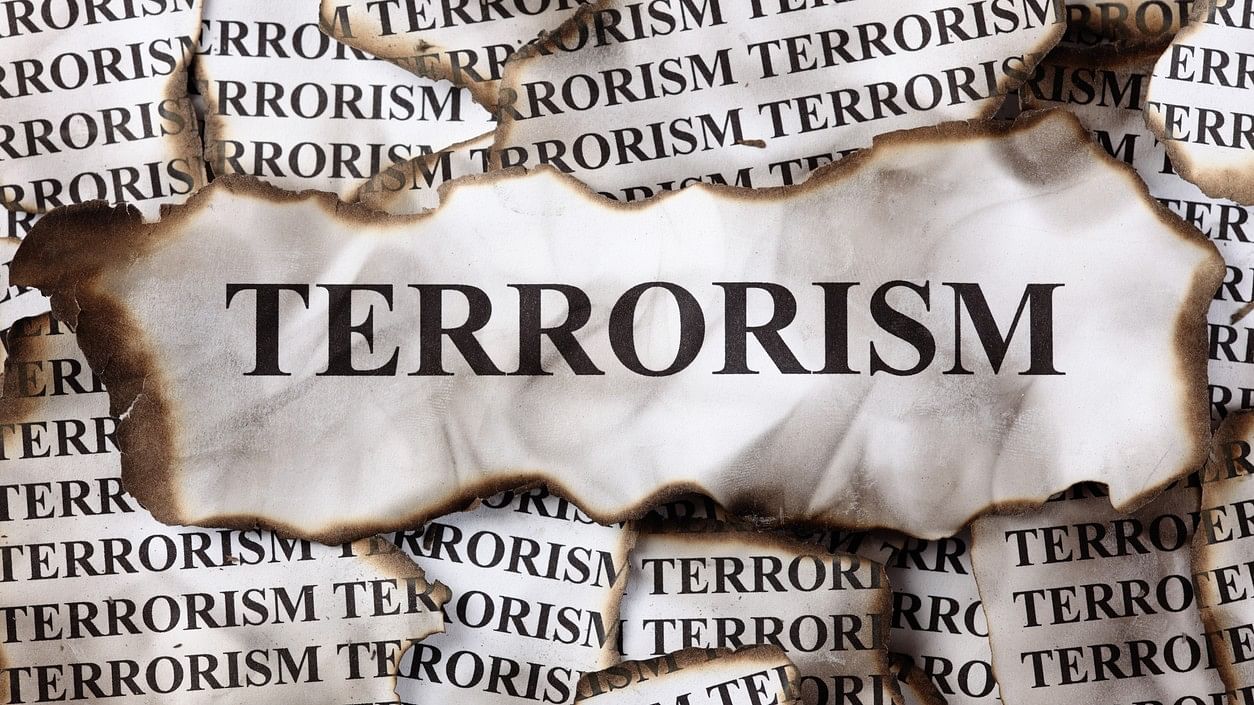
Representative image showing the word 'terrorism'
Credit: iStock Photo
On the 16th anniversary of the 26/11 attack on Mumbai, as we remember those who lost their lives, it is important to remind ourselves, again, of a security apparatus that could neither foresee nor efficiently respond to the attack. This is also a day to assess how we have progressed in our preparedness to thwart similar incidents.
Earlier incidents of terrorism in India were sporadic and local in nature. The global shift unveiled itself with the 9/11 attack; 26/11 was like a sequel following a similar script. The target: Mumbai, the financial capital of India, the perpetrators: a handful of terrorists acting on the instructions of their handlers, the mode: unconventional, using newest available technology (GPS) and entering the city through sea, the
effect: devastating, killing
166 people.
The intelligence agencies failed to gather intelligence about the modus operandi of the attackers. The state government did not act upon the intelligence input because they deemed it unactionable. The police failed to give a coherent response. The NSG (National Security Guard), having its base in New Delhi, reached Mumbai after considerable delay. In the absence of a protocol for disaster mitigation, there was no quick evacuation of the injured. Overall, the Indian security establishment stood exposed.
There was no attempt by the central government to undertake a comprehensive study. P Chidambaram who replaced Shivraj Patil as the Home Minister did make a promising start and measures were announced with an aim of restructuring the country’s anti-terrorism architecture. The most important among them was the proposal to establish the National Counter-Terrorism Centre (NCTC) as a joint operational planning and intelligence centre. Other agencies to be established were MAC (multi-agency centre), NIA (National Investigation Agency), NATGRID (national Intelligence GRID), and CCTNS (Crime and Criminal Tracking Network Systems).
Steps were taken to strengthen the coastal radar chain and coastal AIS (Automatic Identification System) chain. NSG hubs were established in major Indian cities. Coastal security was made the responsibility of Navy, Coast Guard and marine police. Awareness programmes were conducted in coastal areas to make the fishermen eyes and ears of the police. Despite various measures, the consensus amongst the experts on counter-terror architecture is that the system is woefully inadequate. The attack on Indian military installations in Pathankot and Uri raises a fundamental question – if sensitive installations are open to attacks, how safe is the rest of the country?
Poor funding, missing intent
The reason for this inadequacy is that there is a lack of a comprehensive framework to fight terror. The three major bulwarks against terror would be robust intelligence gathering, analysis and sharing, quick and efficient response by the security apparatus, and strong support from the disaster mitigation teams that include medical response teams. In India, most of the attempts to restructure the security framework have been caught in a political quagmire.
The NCTC got buried in the tussle between the centre and the states over its jurisdiction. The states are still sour about the powers given to the NIA. Intelligence agencies are engaged in turf wars. Police personnel are not equipped to handle such situations, not even in the metropolitan cities. In a country faced with severe resource crunch, one can only imagine the money allocated for procurement and maintenance of state-of-the-art equipment such as interceptor boats and amphibious vehicles.
No thought has been given to a comprehensive disaster mitigation protocol. In the midst of all these lacunae,
India’s efforts at curbing money laundering and terror financing is a bright spot, with the FATF (Financial Action Task Force) lauding India’s achievements and placing it in the ‘regular follow-up’ category. This goes on to show that we do have the capacity to put world-class systems in place; we lack only in will.
Without a comprehensive, co-ordinated, and unified approach we cannot hope to face the menace of terrorism. There is a need for an overarching organisation, bringing together all intelligence agencies, investigative agencies, heads of armed forces, paramilitary forces, chief ministers of states, and heads of police as the first tier of the counter-terror architecture. The second tier should involve other departments that could provide inputs regarding terror activities. There needs to be better allocation of resources and proper training of personnel. The public should also be involved by way of undergoing basic disaster response training, and reporting of suspicious activity. Our preparedness will be our best chance of thwarting any such disaster in future.
(The writer is an independent researcher)